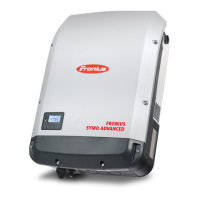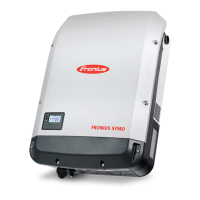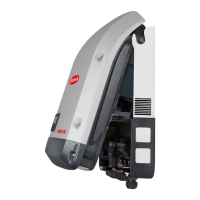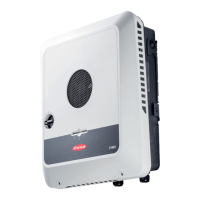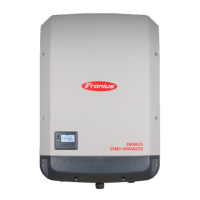Copper (Cu)/aluminum
(Al)
208 V
A
C
AWG 10/AWG 10 AWG 10/AWG 8 AWG 8/AWG 6
220 V
A
C
AWG 10/AWG 10 AWG 10/AWG 8
240 V
A
C
AWG 12/AWG 10 AWG 10/AWG 10
10.0-3 480 12.5-3 480 15.0-3 480
Copper (Cu)/aluminum
(Al)
440 V
AC
AWG 14/AWG 12 AWG 14/AWG 12 AWG 14/AWG 12
480 V
AC
AWG 14/AWG 12 AWG 14/AWG 12 AWG 14/AWG 12
17.5-3 480 20.0-3 480 22.7-3 480
Copper (Cu)/aluminum
(Al)
440 V
AC
AWG 12/AWG 10 AWG 10/AWG 10 AWG 10/AWG 8
480 V
AC
AWG 14/AWG 12 AWG 12/AWG 10 AWG 10/AWG 10
24.0-3 480
Copper (Cu)/aluminum
(Al)
480 V
AC
AWG 10/AWG 10
Preparing Alu-
minum Cables
for Connection
The AC-side terminals are designed for connecting single-wire, round aluminum
cables. Due to the reaction of aluminum with air that creates a tough, non-con-
ductive oxide layer the following points must be considered when connecting alu-
minum cables:
-
Reduced rated currents for aluminum cables
-
The connection requirements listed below
Always follow the instructions of the cable manufacturer when using aluminum
cables.
Take into account local specifications when configuring cable cross sections.
Connection Requirements:
1
Carefully clean off the oxide layer of the stripped end of the cable, e.g., using
a knife
IMPORTANT! Do not use brushes, files, or sandpaper; aluminum particles may
get stuck and can transfer to other cables.
2
After removing the oxide layer of the cable end, rub in a neutral grease, e.g.,
acid-free and alkali-free Vaseline
3
Then immediately connect it to the terminal
IMPORTANT!Repeat the steps above whenever the cable is disconnected and
then reconnected.
29
EN-US

